It’s hard to overstate the climbing achievements of Adam Ondra. He established the grade of 9b+ (5.15c) and has flashed 9a (5.14d); he has climbed 8C+ (V16) boulders and flashed 8B+ (V14); and he stunned the climbing community by making the second ascent of Tommy Caldwell’s Dawn Wall in just 8 days in November 2016. Now Ondra has a new project, harder than any he has ever tried. Once again, he is on the verge of redefining the sport, redrawing the line between the possible and the impossible.
UPDATE: He’s done it! Adam Ondra has sent "Project Hard” after a prolonged siege on what is now the world’s hardest single pitch of rock climbing. The Czech climber announced his success coyly, with a simple, indirect Instagram video:
[embed]https://www.instagram.com/p/BYlfSbsl9Hq/?hl=en&taken-by=adam.ondra[/embed]
Ondra has talked repeatedly about how the line would likely be the world’s first 9c (5.15d). In a press release, Ondra said of the route:
In the morning it felt like every other day on the Project. It was hot, but the air was crystal clear and dry. But I felt very little pressure and lot of psyche. Key ingredients for sending the world's first 9c. At the end of the route when I knew I did it, I had one of the strangest emotions ever. I clipped the anchor and I could not even scream. All I could do was just hang in the rope, feeling tears in my eyes. It was too much joy, relief and excitement all mixed together... Months and months of my life summed up in 20 minutes. So much time and effort in something so short but intense as hell. Every minute spent in Norway, every move in the gym was totally worth it. This route never really turned into a nightmare, despite the time I spent on the route. It was a fun process, and it was even more fun to finish it off.
Grade confirmation will have to wait for future ascentionists, but with Ondra climbing at such an inspired level, who knows whether that will be in ten months or ten years? Below, read The Outdoor Journal’s initial interview with Ondra from mid-July when he was deep in projecting mode. The interview provides some of the most detailed descriptions of the climb yet available.
Adam Ondra, at just 24 years old, has spent the past decade seamlessly making the jump from wunderkind—he sent 9a (5.14d) at just 13 years old—to full-fledged rock climbing superstar. In the past 6 years more specifically, he has been at the vanguard of hard sport climbing, bouldering and even big wall trad climbing, managing to expand the definition of what is possible with sticky rubber shoes and chalked up hands. It all begs the question: Is there an upper limit for Ondra?
With his Project Hard in Flatanger, Norway’s Hanshelleren Cave, for seemingly the first time Ondra is daring to find out. He has made the first ascent of all three of the hardest sport climbs in the world—Change, in Hanshelleren Cave, Norway; La Dura Dura at Oliana, Spain; and Vasil Vasil at Sloup, the Czech Republic—each meriting the still-rare 9b+ (5.15c) grade. Ondra has stated that Project Hard will be a step up at 9c (5.15d), which would make it the most difficult single pitch of climbing the world has ever seen.
With his 9b+ ascents, the question was never really if Ondra would finish them, but when. With Project Hard, that certainty is more fragile.
But Ondra is trying his utmost, climbing harder than anyone ever has before on a rope.
And he’s making progress. Just under two weeks ago, Ondra made the first ascent of a new 9b, Move Hard, as part of the process of working Project Hard. The new 9b links the first crux of Move, a prior 9b he established in the cave, into the second crux of Project Hard.
Then, just over a week ago, Ondra did what he described on Instagram as the “9b+ link,” or the “whole route without the first 20m of 8b [5.13d].” He wrote, “Possibly my hardest route ever, except for the fact that is not a route at all... Yet.”
The Outdoor Journal caught up with Ondra for an exclusive interview in between his projecting and training in Flatanger, Norway.
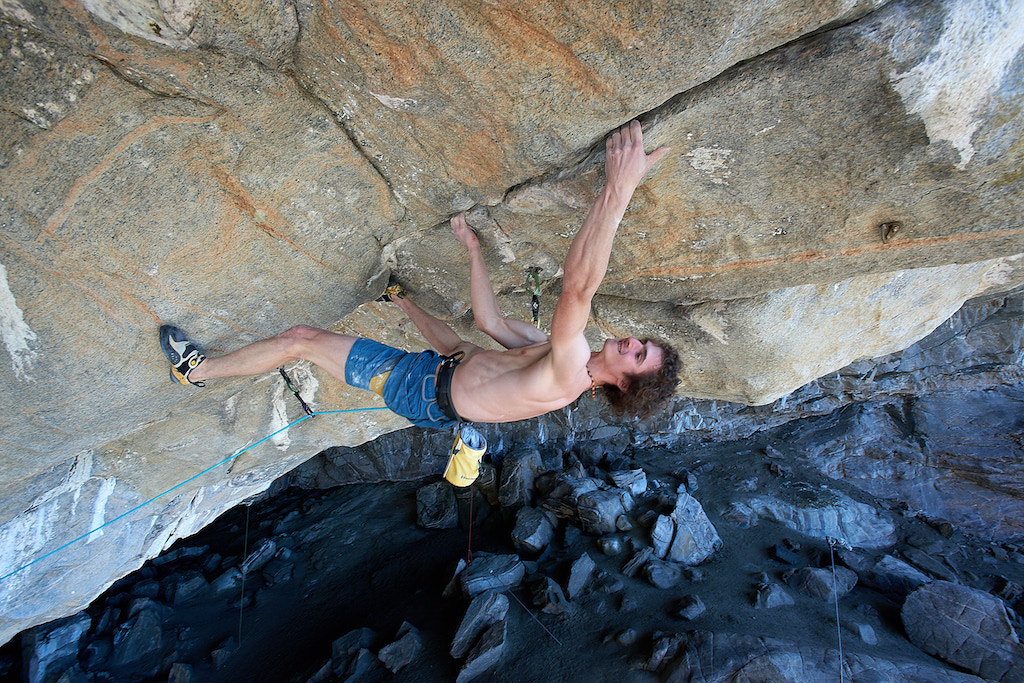
Watching the short clips of you on this climb is pretty incredible. What’s your most recent progress on the route since your “9b+ link” a week ago?
Nothing, unfortunately. Since then I fell ill, and all the progress was halted. It’s been pretty much four days without climbing at all. Kind of strange, because the first four days of my trip I fell really really good, but for some reason I couldn’t do crux one. Then the next day, I finally made the 9b+ link.
Can you describe the entire line?
It’s like 45 meters, more or less. There are 20 meters of 8b [5.13d] climbing and then you come to a mega kneebar. Then another 5 meters of big jug pulling from the kneebar into the place where the the sequence of crux one starts.
Crux one has 10 moves. It’s an 8C [V15] boulder for sure. On its own, for sure one of the hardest boulders in the world. It’s definitely the boulder that’s taken me the most time ever. And, you know, I approached it as a boulder problem. I would just jug up and try it as a boulder problem on its own.
Then later there is a second crux that is an 8B [V13] boulder and then a third crux that is a 7C [V9].
The 9b+ link was from the start of the ten-move crux. So then the next thing to do is add five relatively easy moves right below crux one. But the crux is so much harder after adding the first five relatively easy moves.
The most frustrating thing is I still don’t know how close Project Hard is, because I didn’t get the opportunity to try this link with the five extra moves while being strong and fresh. I think that once I can get this bigger link with the next five moves, I can do the whole thing.
It was definitely a bit annoying getting sick. Starting to feel a bit better though, so now I’ve started training again, and hopefully in a week I’ll be back in shape. But that’s the way it is. It was just an ordinary cold, but if I want to try Project Hard I have to be 100% fit.
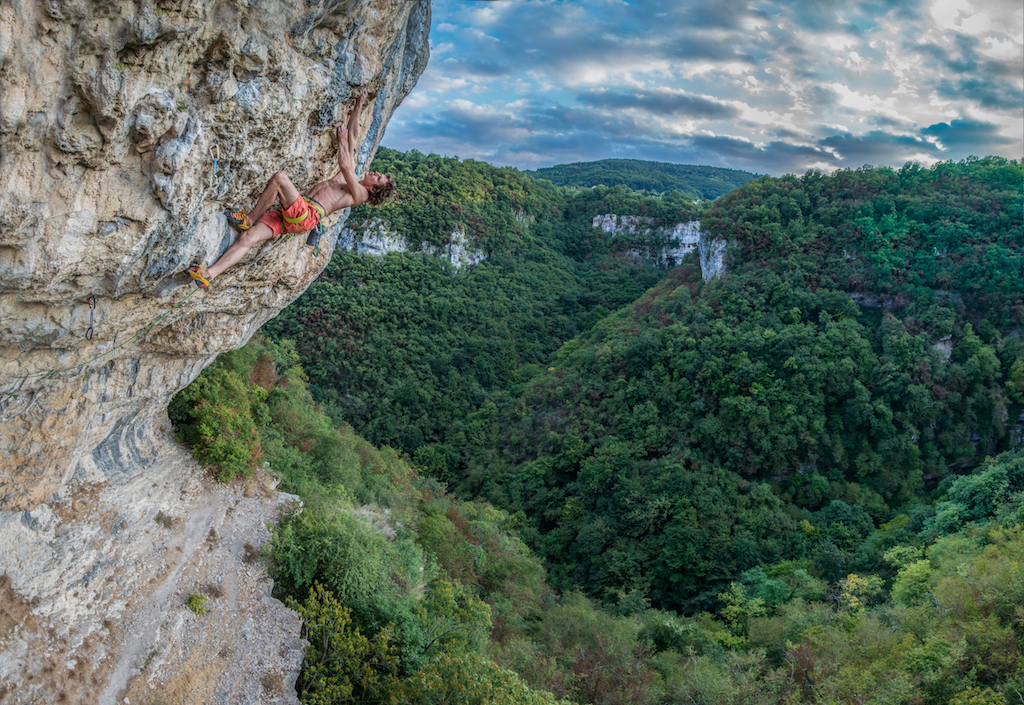
So you think you’ll be able to do the whole thing soon after you’re able to link it from those five pesky moves? Even though there are still those first 20 meters you won’t have added?
I think once I do it from the mega kneebar, then I can probably do it all.
If I climb the first 20 meters of 8b, it doesn’t make me that tired, but overall for the whole body it is tiring, so the kneebars are important.
After the mega kneebar there are two bad kneebars on the way to crux one, but I can only stay in each for 10 seconds maybe. And then there is a kneebar in between crux one and crux two, which is very important, because if that wasn’t there I think the whole route would be 10a or something. If there were no kneebars at all the route would be absolutely impossible for me!
In the end what I need for Project Hard is brute force bouldering power and the fitness to kind of recover in the kneebar 100% in a very short time.
So I trained accordingly and it seemed to work out, but who knows?
How does it compare to other super hard things you’ve climbed like La Dura Dura?
It’s totally different. I’ve never really climbed anything like this. At crux one there are a couple of really physical intro moves before you even throw your feet above your head [the crux involves climbing feet first]—already 8A+ or 8B bouldering. Really physical. And then it gets really tricky. The hardest part is to turn my feet above my head and then get my toe jam 100% perfectly. If it’s not perfect, when I move into the next drop knee, no matter how strong I feel I can’t readjust the toe jam… it’s hopeless. That’s the main difficulty of crux one. Every move has to be so precise, but at the same time you have to focus on all the other tiny details too.
I’ve tried all the moves so many times and still every try is slightly different. My body position, squeezing slightly harder or soft with my fingers, the toe jam; everything is a bit different every time. It’s exciting and frustrating.
I have to climb fast through crux one, but it’s so hard to be precise at that speed. It’s much more of an issue here on Project Hard than on any other project that I’ve ever tried.
From my own experience, when people give bouldering grades to cruxes on sport routes they often overestimate. But on this climb, I think they’re quite accurate. The kneebars make the climb 9c. They make it possible to do these sick moves in the middle of the route. I never would have thought I could climb such a hard boulder after 25 meters of upside-down climbing. It’s sick!
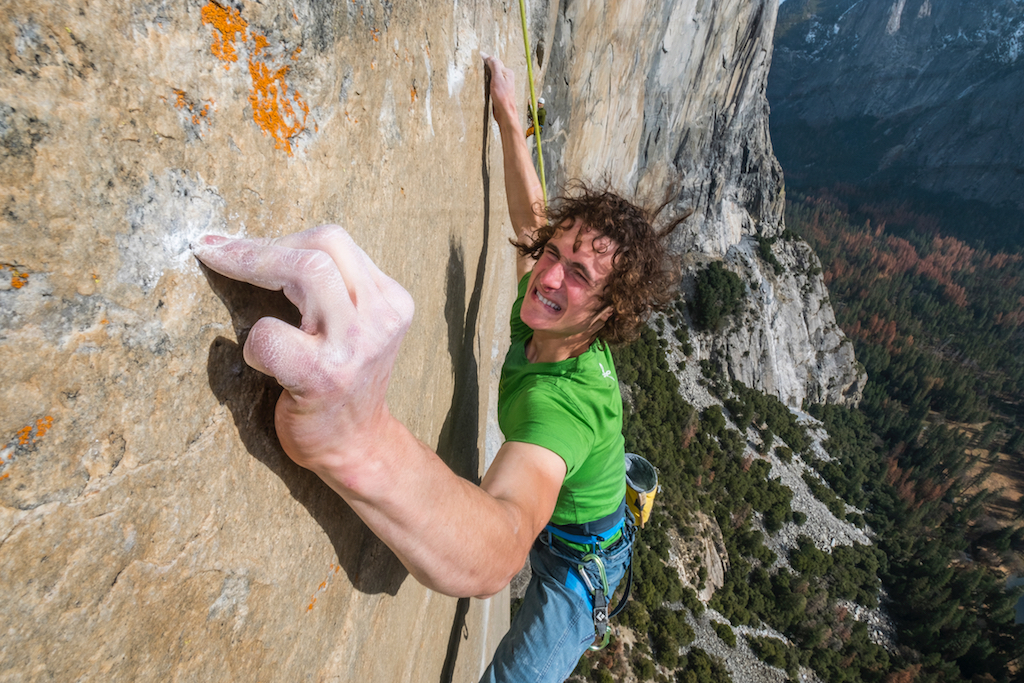
How many days and burns have you put into it so far?
So, up to now, I was mostly just trying crux one. I think I’ve spent seven weeks in total. Usually two days climbing, one day rest. So no more than 35 days of climbing. Last year I probably just wasn’t strong enough, but most of the time I was trying to find the perfect beta anyway.
The thing about a hard project is after a week or two you reach a point where you know the route very well, but from that point on it’s very hard to progress unless you get stronger. I discovered that with La Dura Dura. I thought I would send it in a week or two at one point, but still wasn’t making any new progress a week later. I needed to get a lot stronger just to go a little further on it.
Do you feel like climbing in Yosemite last fall helped you in any way for this project?
They’re very different things. In terms of technique I don’t think it helped for Project Hard, but it taught me about patience.
The Dawn Wall and Project Hard are the two projects that have taken me the most out of my comfort zone.
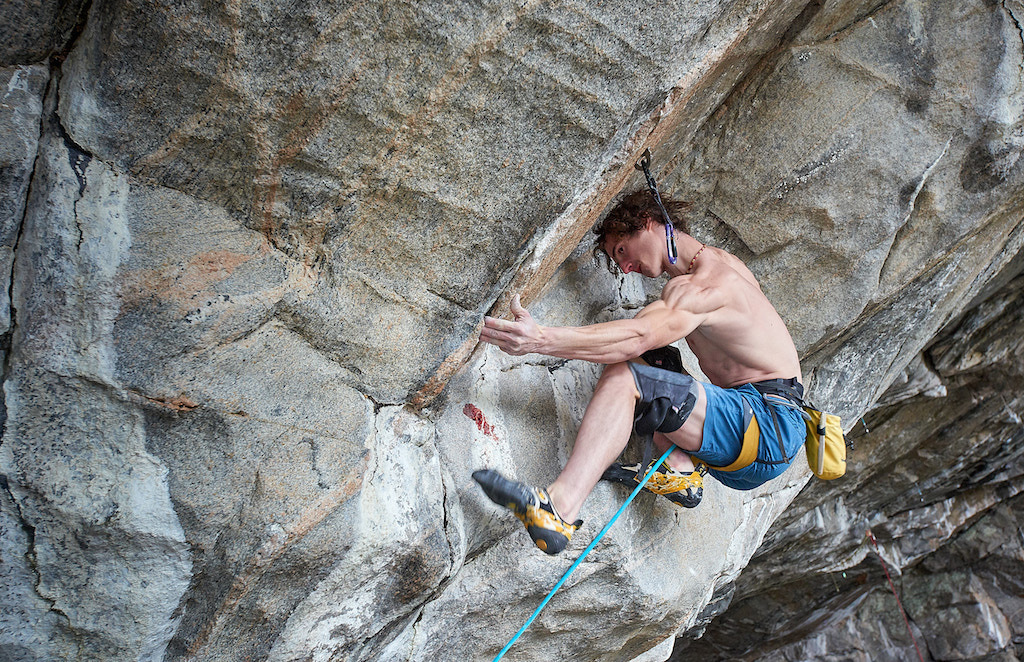
In training for La Dura Dura, you climbed V16. What have you been doing to train for Project Hard?
My training has consisted of a lot of bouldering. Not 100% simulating Project Hard, but setting problems with the same angle and style of climbing. Lots of sidepulls and slopey holds. Cutting loose and turning around with my feet and stuff. Doing a lot of kneebars. Even in the worst kneebars trying to hang for longer—that definitely helped a lot.
I specifically trained my calf muscles and that was a big revelation for me. Because I only ever thought of my core as important for kneebars, but as long as your calf is strong enough, that’s all you need. Then you can hang upside down even in a pretty shitty kneebar, and the whole body is 100% relaxed except for the calf.
So I’ve progressed a ton in the past year. That’s why I’m hopeful that if I can get to the mega kneebar, I won’t fall off after.
How do you stay motivated on something this hard? Do you ever get discouraged?
It’s definitely frustrating sometimes, because it’s not always about how strong I feel but also about these tiny details. Some days I feel super strong but the toe jam or something isn’t perfect and nothing works.
That’s just part of the game though! I like it all. The moves are amazing. It’s such unique movement for real rock. Everytime I try it, I’m still blown away—it’s absolutely crazy that any of it actually works.
When did you first bolt Project Hard and when did you first try it?
So the line was actually started by Laurent Laporte—he came in 2011. The part of the cave which is really steep, there were no routes at all at that time. There were a couple old routes, maybe ten, from the 90s, but they were all on the far left side, which is only slightly overhanging.
Project Hard was the first route in the really steep area, but Laurent stopped bolting right near crux one because he thought it would be impossible. I finished bolting the whole line to the current anchors in 2013.
I tried it for a couple of days in 2013. I couldn’t do all the moves then. It looked hard, but possible. But at that time, I didn’t think I had the ability to do it. So I gave it a rest and finally came back to it last year.
The decision last year was whether to try Project Hard or Project Big, probably both 9c's. But Project Big at that moment seemed more intimidating. Since Project Hard was mainly about the first crux, I was hoping I could maybe find some slightly easier beta—which I did, but it’s still very, very hard...
Project Big has multiple hard boulders stacked on top of each other. One day I’d love to do that climb as well. Then I’ll be happy with the cave.
There are still two other projects also, not as impressive as Project Hard or Project Big. But at the same time, I don’t want to spend my whole life in one climbing area, no matter how impressive it is.
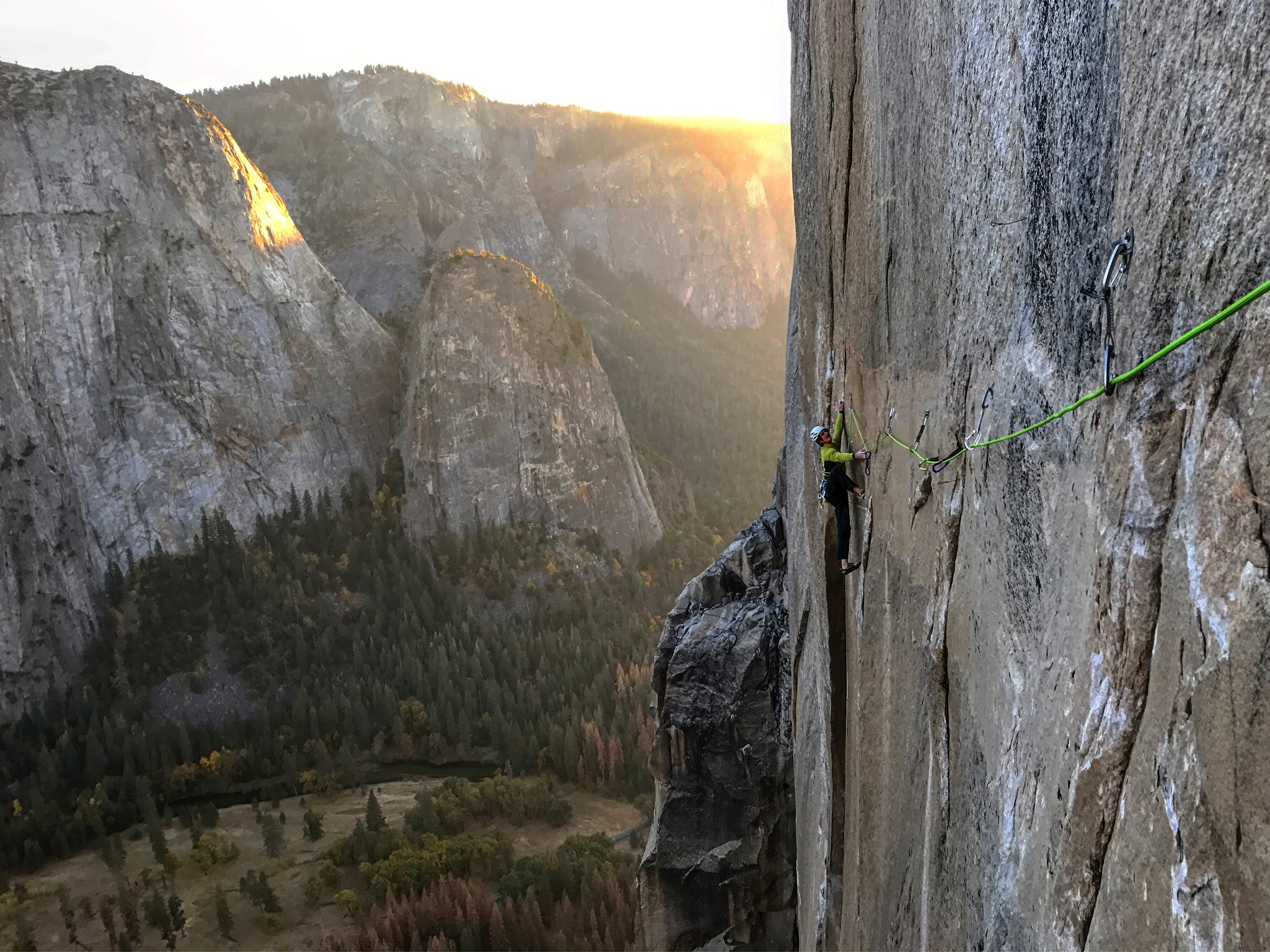
When people think of Hanshelleren Cave, they almost certainly think of you, the same way that people associate Chris Sharma with Oliana, and Tommy Caldwell with El Capitan. What is it about the cave that keeps you coming back?
In terms of style, the cave isn’t that unique. What’s unique is the rock it has. Most of the caves in the world that are of a similar size are limestone. And mostly, they’re really chossy.
To give an example, most of the boulderers who are used to climbing on really nice rock in Rocklands [South Africa] or Red Rock [Las Vegas, USA], when they want to get into sport climbing, they go to Spain, places like Oliana or Santa Linya. And they’re horrified by how much bad rock there is and how much glue is on the wall keeping the holds up. If you take the bouldery sequences from those routes in Spain, they don’t necessarily compare to the world’s best boulder problems. The routes are nice and flow well, but in terms of the beauty of the moves, it’s rare to find something that blows your mind.
But in Flatanger, it's absolutely amazing. The movement of the problems in the middle of the routes—if you took them and put them on boulders in Rocklands, they would still be absolute classics.
What I like most in climbing is the beauty of the moves. For me, the beauty of the moves is even more important than the beauty of the line. And I’m totally amazed by the beauty of the moves here in Flatanger.
How much longer do you have in Flatanger this summer?
I don’t really have any deadline, but we’ll probably leave around the beginning of August. At the moment, since I’m feeling sick, there’s not much chance I’ll send it this trip.
I’ll definitely come back this fall. The question is how much time out of the whole season I want to sacrifice just to Project Hard. Spending all the available time that I have here would maybe put too much pressure on me, so I’ll have to see.
So do you think you’ll be able to do it this season? Next?
I’m hoping I can get it this season, but if I don’t get it hopefully next season. And if not that then the next next season! I’ve already given it so much that I definitely want to get it done. But with these hard projects, you don’t really know how much extra work it warrants until you’re really, really close to sending. I’m hoping it’ll be soon.
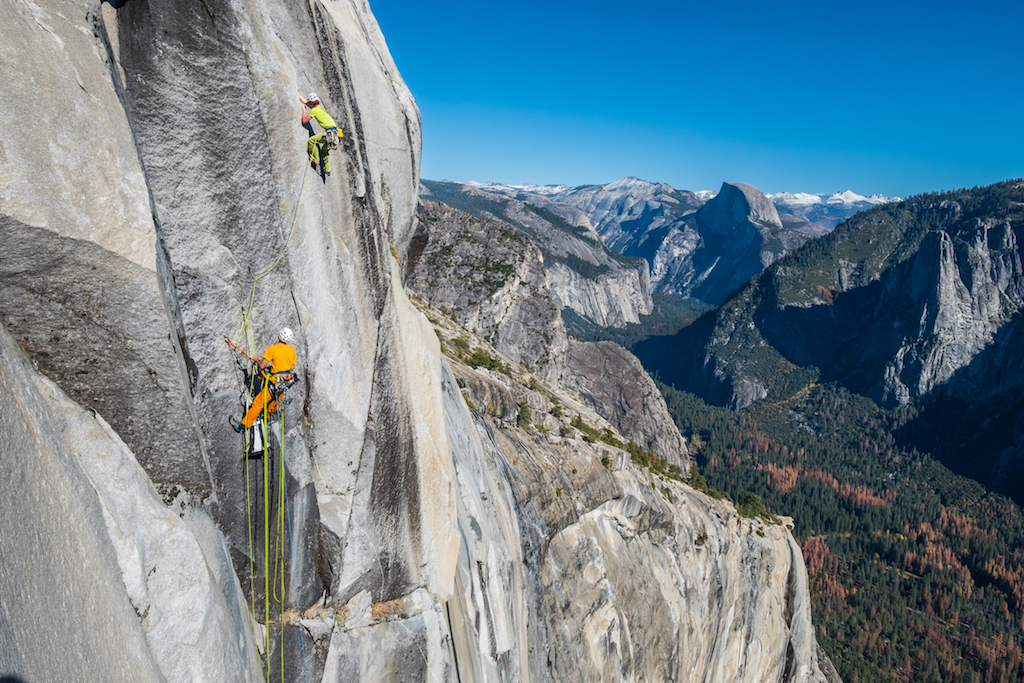
Feature Image: Ondra in the middle of the second crux (about the difficulty of an 8B (V13) boulder problem) of Project Hard. Photo: Pavel Blažek

![[Update] Adam Ondra Talks 'Project Hard'](/content/images/size/w30/wp-content/uploads/ao_project-hard-2017_by-pavel-blazek_7.jpg)











